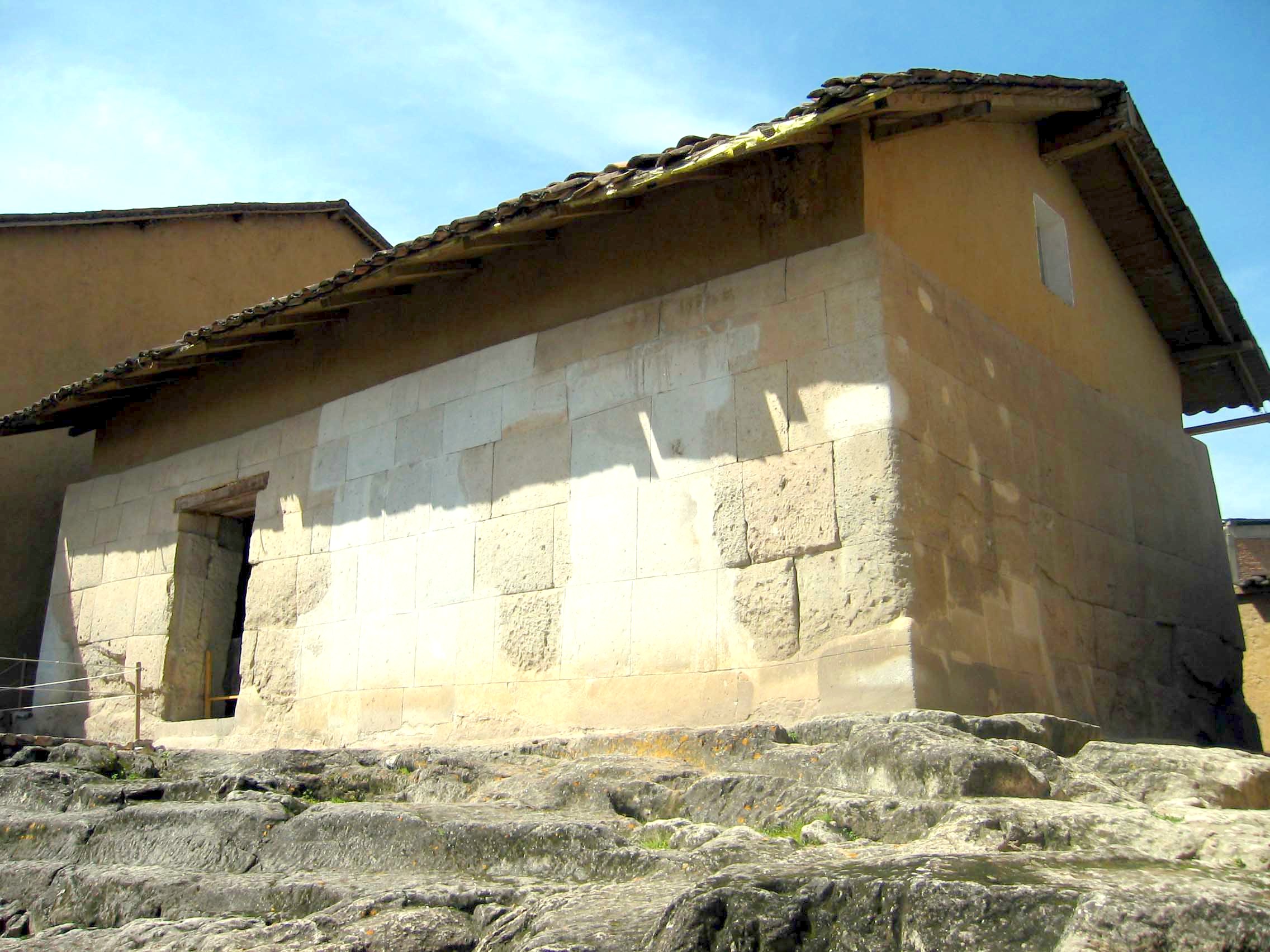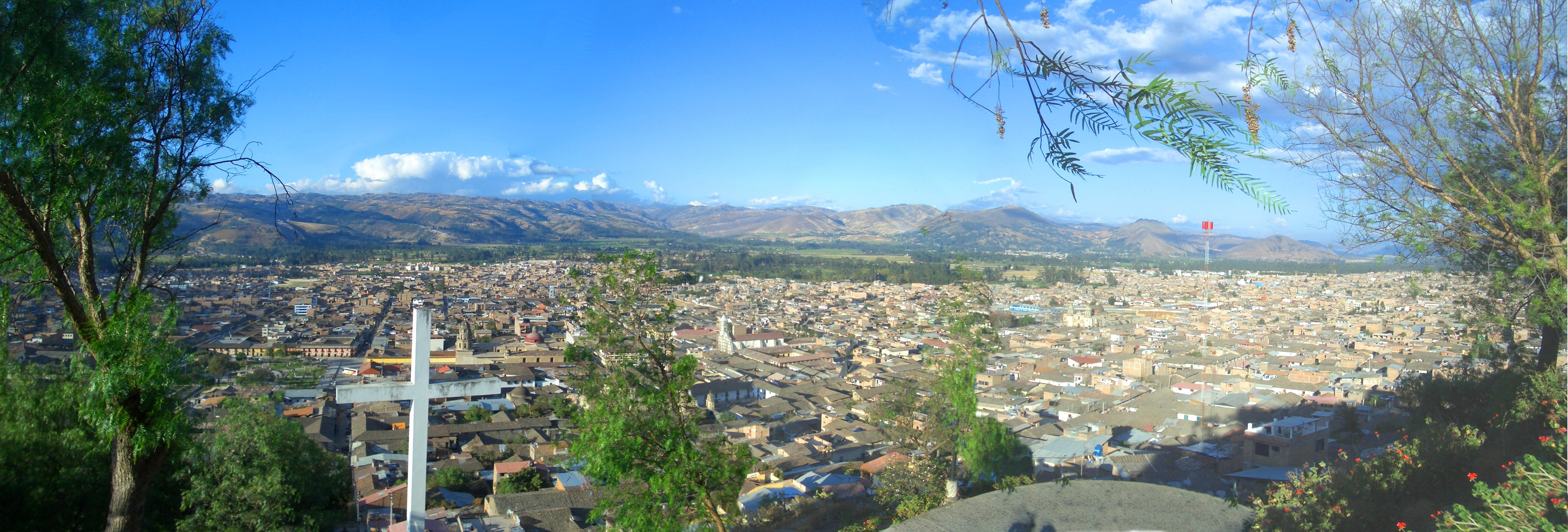|
St. Catherine Cathedral, Cajamarca
The St. Catherine Cathedral () also called Cajamarca Cathedral It is the main temple of the Catholic Church in the city of Cajamarca in Peru. Built in Baroque style it is owned by the Catholic Diocese of Cajamarca, and was declared Cultural Heritage of the Nation in Peru in 1972. In the seventeenth century the construction of the current building starts. In the eighteenth century they are melted the bells of the cathedral. Since 1908 holds the rank cathedral. It is under the pastoral responsibility of the Bishop José Carmelo Martínez Lázaro See also *Roman Catholicism in Peru *St. Catherine's Church (other) Saint Catherine's Church, or Saint Catharine's Church, or variations thereof, may refer to: Croatia *St. Catherine's Church, Zagreb Egypt *St. Catherine Church, Mansheya, Alexandria *St. Catherine Church, Heliopolis, Cairo Finland *St. Cat ... References {{DEFAULTSORT:St. Catherine Cathedral, Church Roman Catholic cathedrals in Peru Cajamarca ... [...More Info...] [...Related Items...] OR: [Wikipedia] [Google] [Baidu] |
Cajamarca
Cajamarca (), also known by the Quechua name, ''Kashamarka'', is the capital and largest city of the Cajamarca Region as well as an important cultural and commercial center in the northern Andes. It is located in the northern highlands of Peru at approximately 2,750 m (8,900 ft) above sea level in the valley of the Mashcon river. Cajamarca had an estimated population of about 226,031 inhabitants in 2015, making it the 13th largest city in Peru. Cajamarca has a mild highland climate, and the area has very fertile soil. The city is well known for its dairy products and mining activity in the surroundings. Among its tourist attractions, Cajamarca has numerous examples of Spanish colonial religious architecture, beautiful landscapes, pre-Hispanic archeological sites and hot springs at the nearby town of Baños del Inca (Baths of the Inca). The history of the city is highlighted by the Battle of Cajamarca, which marked the defeat of the Inca Empire by Spanish invader ... [...More Info...] [...Related Items...] OR: [Wikipedia] [Google] [Baidu] |
Roman Catholic Church
The Catholic Church (), also known as the Roman Catholic Church, is the List of Christian denominations by number of members, largest Christian church, with 1.27 to 1.41 billion baptized Catholics Catholic Church by country, worldwide as of 2025. It is among the world's oldest and largest international institutions and has played a prominent role in the history and development of Western civilization.Gerald O'Collins, O'Collins, p. v (preface). The church consists of 24 Catholic particular churches and liturgical rites#Churches, ''sui iuris'' (autonomous) churches, including the Latin Church and 23 Eastern Catholic Churches, which comprise almost 3,500 dioceses and Eparchy, eparchies List of Catholic dioceses (structured view), around the world, each overseen by one or more Bishops in the Catholic Church, bishops. The pope, who is the bishop of Rome, is the Papal supremacy, chief pastor of the church. The core beliefs of Catholicism are found in the Nicene Creed. The ... [...More Info...] [...Related Items...] OR: [Wikipedia] [Google] [Baidu] |
Peru
Peru, officially the Republic of Peru, is a country in western South America. It is bordered in the north by Ecuador and Colombia, in the east by Brazil, in the southeast by Bolivia, in the south by Chile, and in the south and west by the Pacific Ocean. Peru is a Megadiverse countries, megadiverse country, with habitats ranging from the arid plains of the Pacific coastal region in the west, to the peaks of the Andes mountains extending from the north to the southeast of the country, to the tropical Amazon basin rainforest in the east with the Amazon River. Peru has Demographics of Peru, a population of over 32 million, and its capital and largest city is Lima. At , Peru is the List of countries and dependencies by area, 19th largest country in the world, and the List of South American countries by area, third largest in South America. Pre-Columbian Peru, Peruvian territory was home to Andean civilizations, several cultures during the ancient and medieval periods, and has one o ... [...More Info...] [...Related Items...] OR: [Wikipedia] [Google] [Baidu] |
Baroque Style
The Baroque ( , , ) is a Western style of architecture, music, dance, painting, sculpture, poetry, and other arts that flourished from the early 17th century until the 1750s. It followed Renaissance art and Mannerism and preceded the Rococo (in the past often referred to as "late Baroque") and Neoclassical styles. It was encouraged by the Catholic Church as a means to counter the simplicity and austerity of Protestant architecture, art, and music, though Lutheran Baroque art developed in parts of Europe as well. The Baroque style used contrast, movement, exuberant detail, deep color, grandeur, and surprise to achieve a sense of awe. The style began at the start of the 17th century in Rome, then spread rapidly to the rest of Italy, France, Spain, and Portugal, then to Austria, southern Germany, Poland and Russia. By the 1730s, it had evolved into an even more flamboyant style, called ''rocaille'' or ''Rococo'', which appeared in France and Central Europe until the mid to late ... [...More Info...] [...Related Items...] OR: [Wikipedia] [Google] [Baidu] |
Cultural Heritage Of Peru
The cultural heritage of Peru, officially the Cultural heritage of the Nation, is the name given to the set of goods, both tangible and intangible, accumulated over time. These goods can be paleontological, archaeological, architectural, historical, artistic, military, social, anthropological or intellectual. In Peru, the competence for the protection of cultural heritage is in the hands of the Ministry of Culture (Peru), Ministry of Culture. In August 2000, the National Institute of Culture published a list of temples, convents and cemeteries declared cultural heritage. Classification In Peru, cultural heritage is regulated by Law No. 28296 (''General Law of Cultural Heritage of the Nation''), which establishes the national policy for the defense, protection, promotion, ownership and legal regime and the destination of the goods that constitute the Cultural Heritage of the Nation. Categories *Immovable material heritage: Those cultural assets that cannot be moved, including arc ... [...More Info...] [...Related Items...] OR: [Wikipedia] [Google] [Baidu] |
Cajamarca Plaza Cathedral
Cajamarca (), also known by the Quechua name, ''Kashamarka'', is the capital and largest city of the Cajamarca Region as well as an important cultural and commercial center in the northern Andes. It is located in the northern highlands of Peru at approximately 2,750 m (8,900 ft) above sea level in the valley of the Mashcon river. Cajamarca had an estimated population of about 226,031 inhabitants in 2015, making it the 13th largest city in Peru. Cajamarca has a mild highland climate, and the area has very fertile soil. The city is well known for its dairy products and mining activity in the surroundings. Among its tourist attractions, Cajamarca has numerous examples of Spanish colonial religious architecture, beautiful landscapes, pre-Hispanic archeological sites and hot springs at the nearby town of Baños del Inca (Baths of the Inca). The history of the city is highlighted by the Battle of Cajamarca, which marked the defeat of the Inca Empire by Spanish invaders as ... [...More Info...] [...Related Items...] OR: [Wikipedia] [Google] [Baidu] |
Roman Catholicism In Peru
The Catholic Church in Peru is part of the worldwide Catholic Church, under the spiritual leadership of the pope, the curia in Rome, and the Peruvian Episcopal Conference. Catholics compose an estimated 76% of Peru's population, according to the 2017 census. In 2020, there were over 3,000 priests and over 9,000 nuns serving across 1,670 parishes; the church also ran 136 hospitals and homes for the old and infirm. The Holy See and the government of Peru concluded a pact regulating their relations and certain aspects of the Church's status in Peru on 26 July 1980. Peru has produced two famous saints, St. Rose of Lima and St. Martin de Porres, as well as two Blesseds, Ana de los Ángeles (Ana Monteagudo Ponce de León) and Antonia Luzmila Rivas López (María Agustina). In 2025, Pope Leo XIV, an American who migrated to Peru in 1985 and who also spent most of his career as a missionary in Peru, would become the first Pope with Peruvian citizenship. Demographics Catholicism ha ... [...More Info...] [...Related Items...] OR: [Wikipedia] [Google] [Baidu] |
Roman Catholic Cathedrals In Peru
Roman or Romans most often refers to: *Rome, the capital city of Italy *Ancient Rome, Roman civilization from 8th century BC to 5th century AD *Roman people, the people of Roman civilization *Epistle to the Romans, shortened to Romans, a letter written by Paul, found in the New Testament of the Christian Bible * Ar-Rum (), the 30th sura of the Quran. Roman or Romans may also refer to: Arts and entertainment Music * Romans (band), a Japanese pop group * ''Roman'' (album), by Sound Horizon, 2006 * ''Roman'' (EP), by Teen Top, 2011 *" Roman (My Dear Boy)", a 2004 single by Morning Musume Film and television *Film Roman, an American animation studio * ''Roman'' (film), a 2006 American suspense-horror film * ''Romans'' (2013 film), an Indian Malayalam comedy film * ''Romans'' (2017 film), a British drama film * ''The Romans'' (''Doctor Who''), a serial in British TV series People * Roman (given name), a given name, including a list of people and fictional characters *Roman (surname ... [...More Info...] [...Related Items...] OR: [Wikipedia] [Google] [Baidu] |


